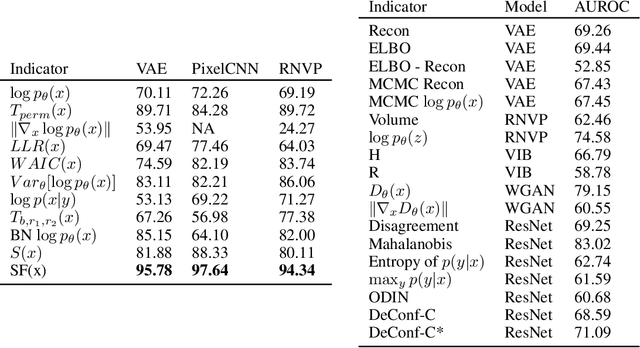Mingliang Li
A Novel Local Focusing Mechanism for Deepfake Detection Generalization
Aug 23, 2025Abstract:The rapid advancement of deepfake generation techniques has intensified the need for robust and generalizable detection methods. Existing approaches based on reconstruction learning typically leverage deep convolutional networks to extract differential features. However, these methods show poor generalization across object categories (e.g., from faces to cars) and generation domains (e.g., from GANs to Stable Diffusion), due to intrinsic limitations of deep CNNs. First, models trained on a specific category tend to overfit to semantic feature distributions, making them less transferable to other categories, especially as network depth increases. Second, Global Average Pooling (GAP) compresses critical local forgery cues into a single vector, thus discarding discriminative patterns vital for real-fake classification. To address these issues, we propose a novel Local Focus Mechanism (LFM) that explicitly attends to discriminative local features for differentiating fake from real images. LFM integrates a Salience Network (SNet) with a task-specific Top-K Pooling (TKP) module to select the K most informative local patterns. To mitigate potential overfitting introduced by Top-K pooling, we introduce two regularization techniques: Rank-Based Linear Dropout (RBLD) and Random-K Sampling (RKS), which enhance the model's robustness. LFM achieves a 3.7 improvement in accuracy and a 2.8 increase in average precision over the state-of-the-art Neighboring Pixel Relationships (NPR) method, while maintaining exceptional efficiency at 1789 FPS on a single NVIDIA A6000 GPU. Our approach sets a new benchmark for cross-domain deepfake detection. The source code are available in https://github.com/lmlpy/LFM.git
Step-Audio 2 Technical Report
Jul 24, 2025Abstract:This paper presents Step-Audio 2, an end-to-end multi-modal large language model designed for industry-strength audio understanding and speech conversation. By integrating a latent audio encoder and reasoning-centric reinforcement learning (RL), Step-Audio 2 achieves promising performance in automatic speech recognition (ASR) and audio understanding. To facilitate genuine end-to-end speech conversation, Step-Audio 2 incorporates the generation of discrete audio tokens into language modeling, significantly enhancing its responsiveness to paralinguistic information such as speaking styles and emotions. To effectively leverage the rich textual and acoustic knowledge in real-world data, Step-Audio 2 integrates retrieval-augmented generation (RAG) and is able to call external tools such as web search to mitigate hallucination and audio search to switch timbres. Trained on millions of hours of speech and audio data, Step-Audio 2 delivers intelligence and expressiveness across diverse conversational scenarios. Evaluation results demonstrate that Step-Audio 2 achieves state-of-the-art performance on various audio understanding and conversational benchmarks compared to other open-source and commercial solutions. Please visit https://github.com/stepfun-ai/Step-Audio2 for more information.
Step-Audio: Unified Understanding and Generation in Intelligent Speech Interaction
Feb 18, 2025Abstract:Real-time speech interaction, serving as a fundamental interface for human-machine collaboration, holds immense potential. However, current open-source models face limitations such as high costs in voice data collection, weakness in dynamic control, and limited intelligence. To address these challenges, this paper introduces Step-Audio, the first production-ready open-source solution. Key contributions include: 1) a 130B-parameter unified speech-text multi-modal model that achieves unified understanding and generation, with the Step-Audio-Chat version open-sourced; 2) a generative speech data engine that establishes an affordable voice cloning framework and produces the open-sourced lightweight Step-Audio-TTS-3B model through distillation; 3) an instruction-driven fine control system enabling dynamic adjustments across dialects, emotions, singing, and RAP; 4) an enhanced cognitive architecture augmented with tool calling and role-playing abilities to manage complex tasks effectively. Based on our new StepEval-Audio-360 evaluation benchmark, Step-Audio achieves state-of-the-art performance in human evaluations, especially in terms of instruction following. On open-source benchmarks like LLaMA Question, shows 9.3% average performance improvement, demonstrating our commitment to advancing the development of open-source multi-modal language technologies. Our code and models are available at https://github.com/stepfun-ai/Step-Audio.
DOI: Divergence-based Out-of-Distribution Indicators via Deep Generative Models
Aug 12, 2021



Abstract:To ensure robust and reliable classification results, OoD (out-of-distribution) indicators based on deep generative models are proposed recently and are shown to work well on small datasets. In this paper, we conduct the first large collection of benchmarks (containing 92 dataset pairs, which is 1 order of magnitude larger than previous ones) for existing OoD indicators and observe that none perform well. We thus advocate that a large collection of benchmarks is mandatory for evaluating OoD indicators. We propose a novel theoretical framework, DOI, for divergence-based Out-of-Distribution indicators (instead of traditional likelihood-based) in deep generative models. Following this framework, we further propose a simple and effective OoD detection algorithm: Single-shot Fine-tune. It significantly outperforms past works by 5~8 in AUROC, and its performance is close to optimal. In recent, the likelihood criterion is shown to be ineffective in detecting OoD. Single-shot Fine-tune proposes a novel fine-tune criterion to detect OoD, by whether the likelihood of the testing sample is improved after fine-tuning a well-trained model on it. Fine-tune criterion is a clear and easy-following criterion, which will lead the OoD domain into a new stage.
 Add to Chrome
Add to Chrome Add to Firefox
Add to Firefox Add to Edge
Add to Edge